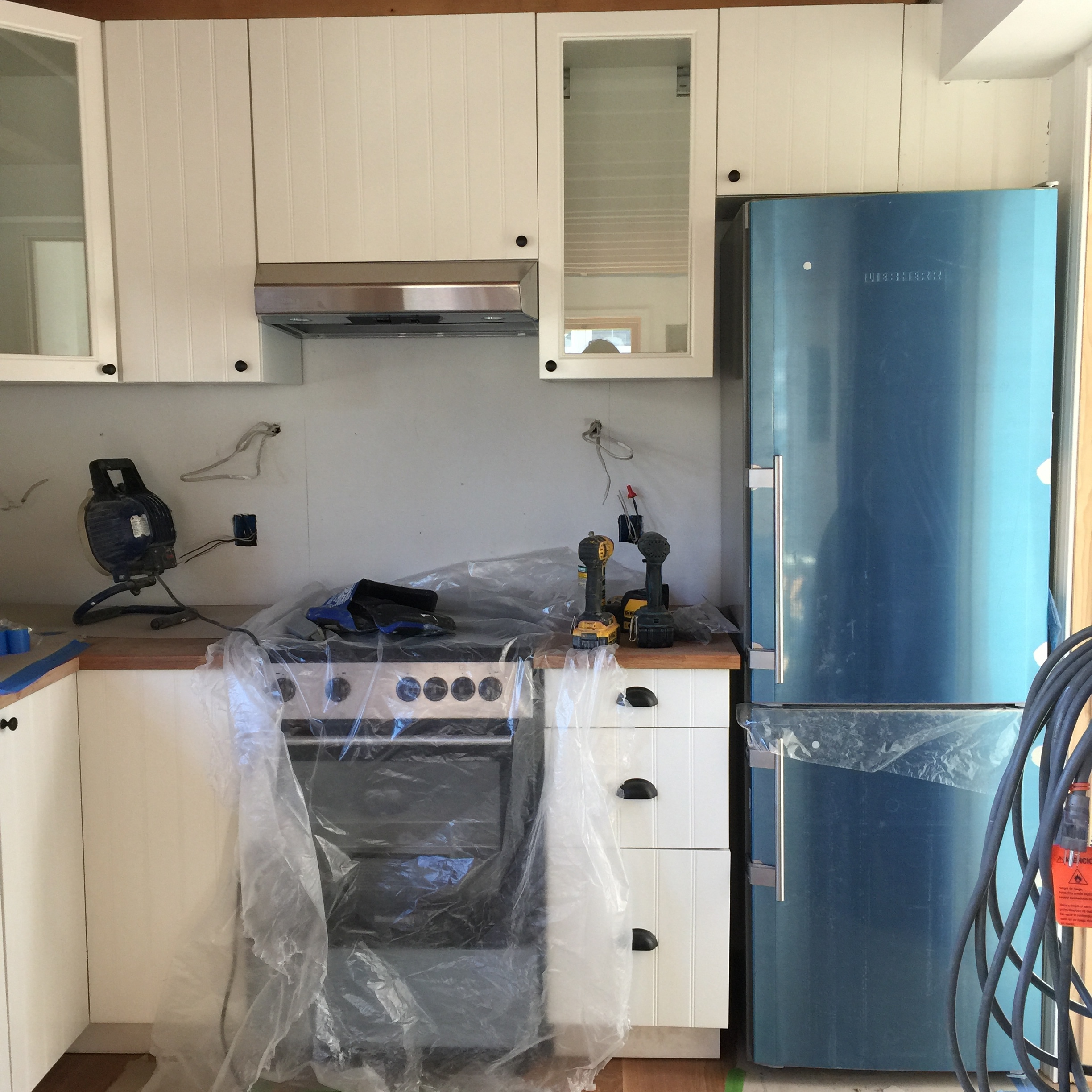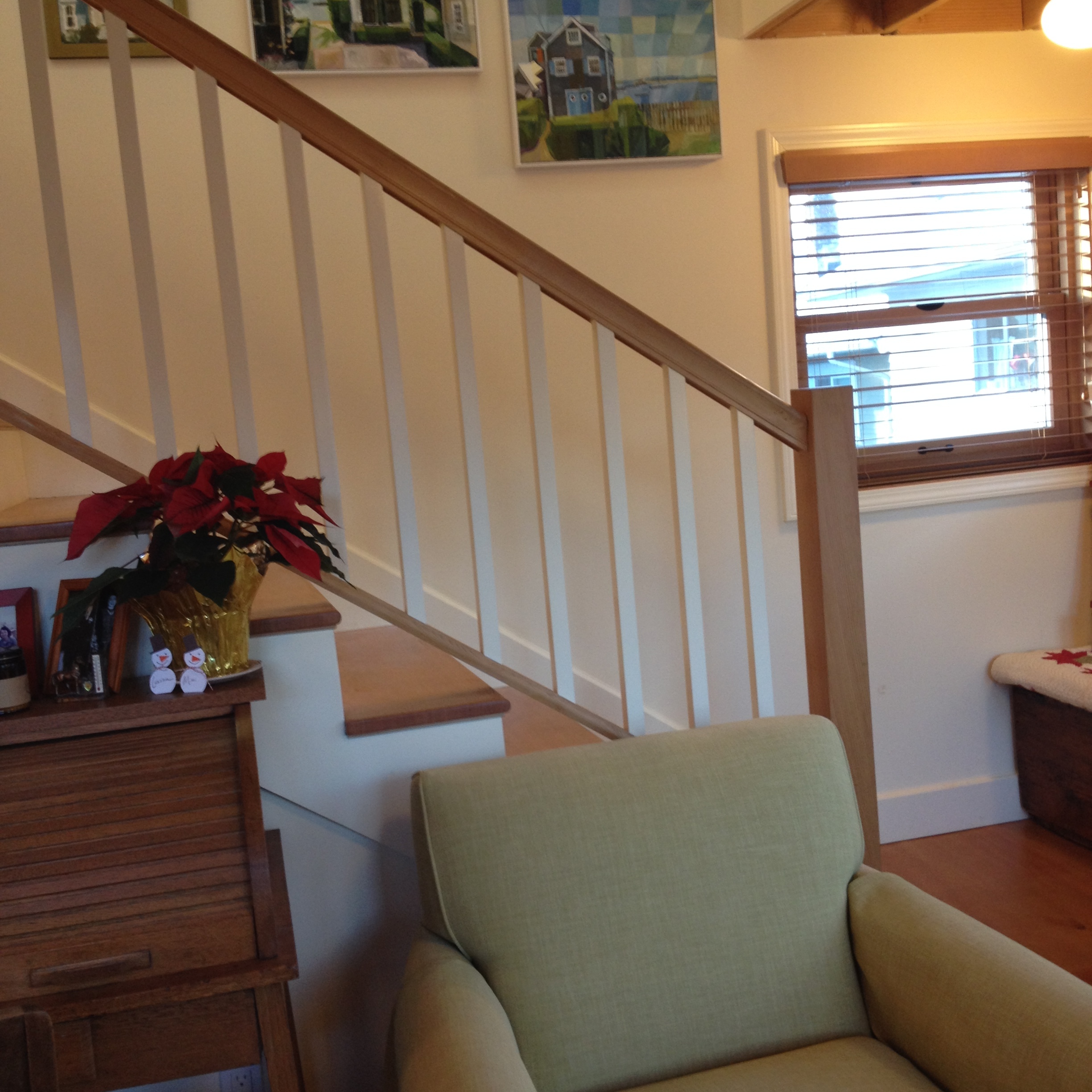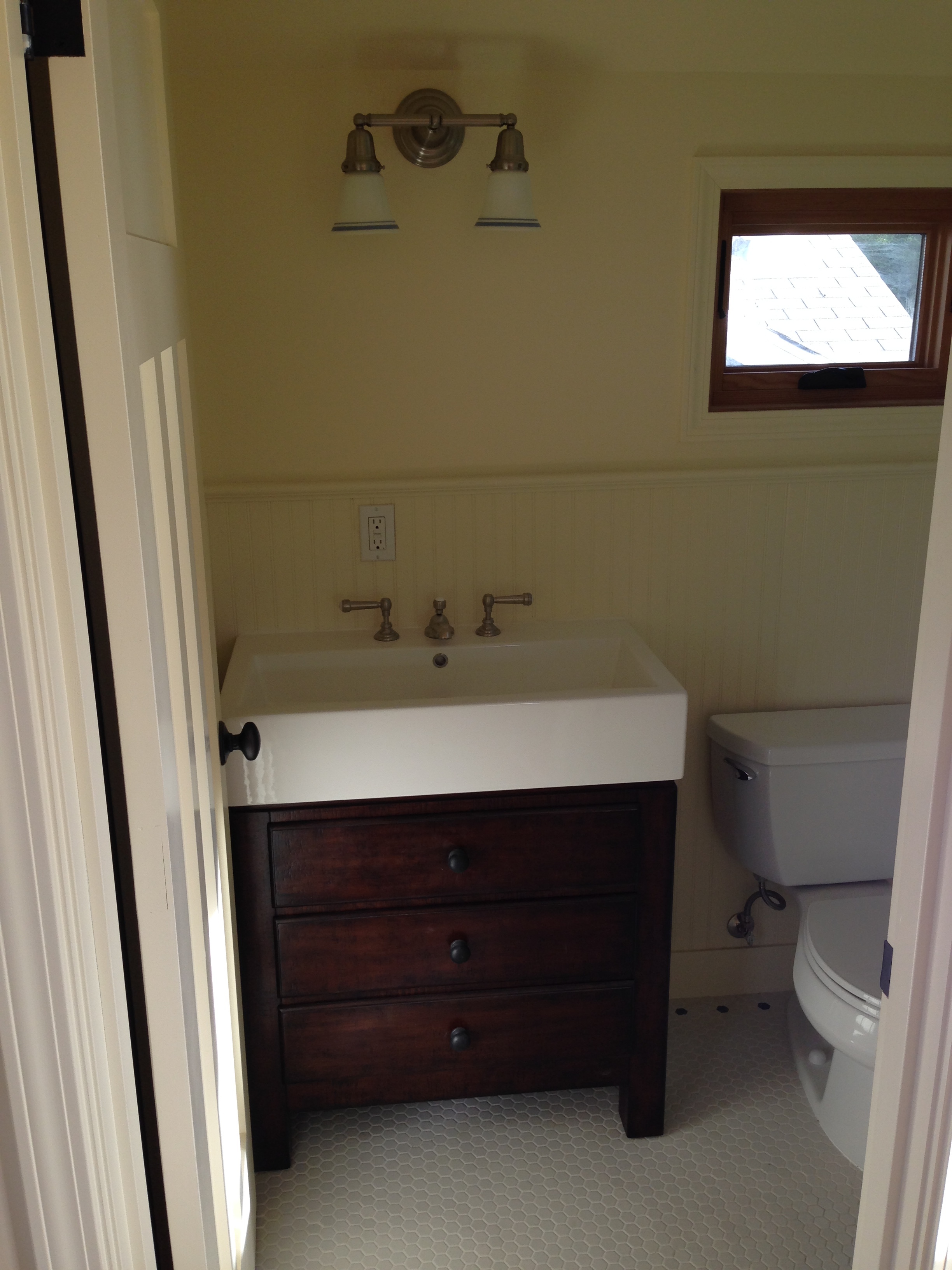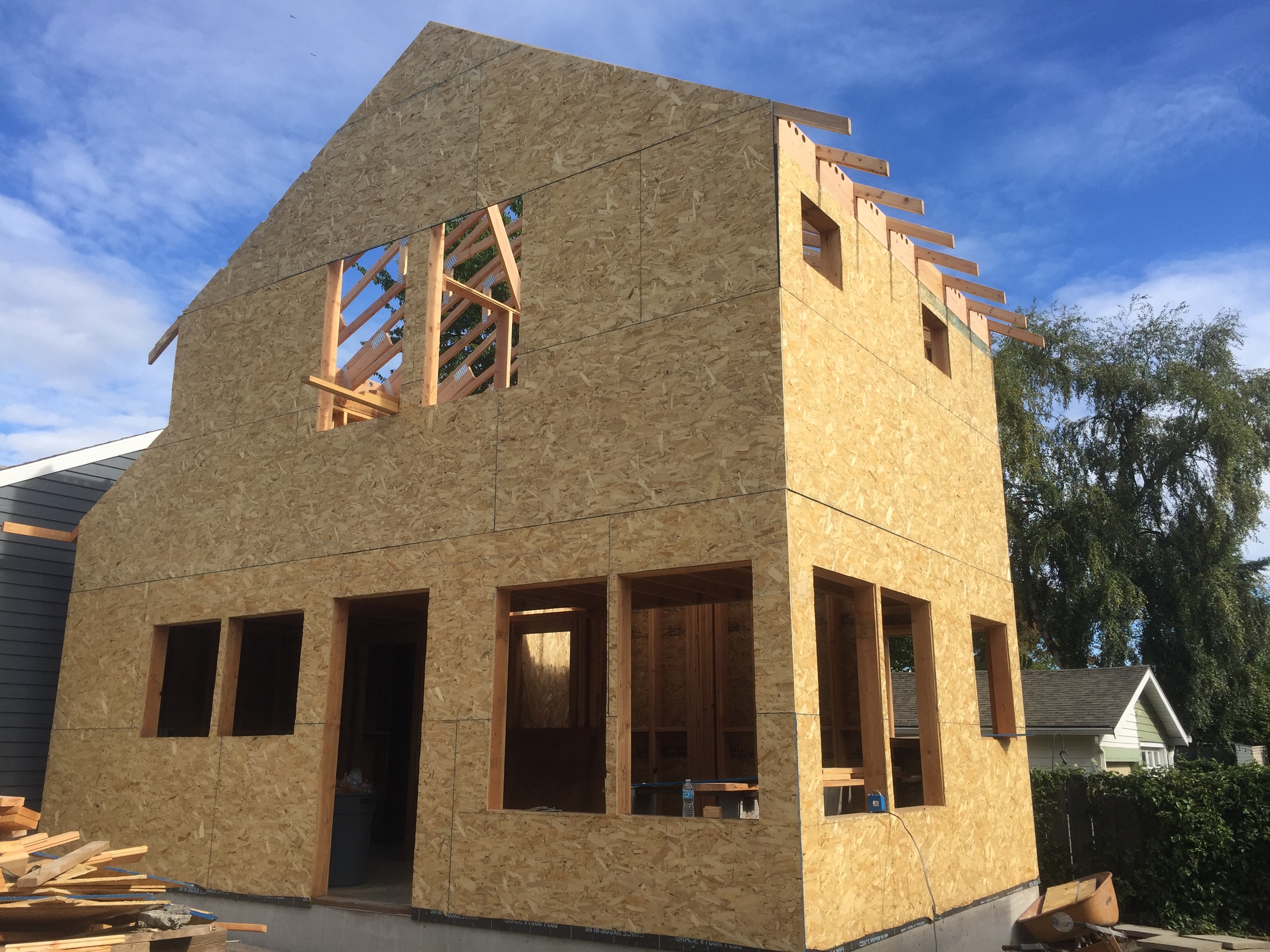Starting 2017 Side by Side
January is a natural time for reflection. When we last wrote, Meredith and Elyse were preparing to move into the nearly finished cottage in time for Thanksgiving. Since then we've been busy nesting and settling into life as an intergenerational compound. We post with gratitude as we reflect on the whirlwind of activities in 2016 that have resulted in the completion of our backyard cottage. Here's a look back at what we've been up to since Drew and Jacob welcomed two new very important retirees to their Ballard abode.
On November 4th, Adams moving arrived right on time in West Seattle. After the swift sale of Meredith and Elyse's house and a month of packing and downsizing, they were ready to make the move. But let’s not get ahead of ourselves. We left you hanging on the final building details and want to catch you up.
After Joe installed the cabinets, it was time to put up the bold black and white backsplash. The countertops are oak and can be treated with cutting board oil. Everything coordinates well with the 24-inch stove and refrigerator. Joe’s meticulous measuring was miraculous. Everything fits!
The downstairs floors and stair risings are oak. The upstairs are fir. All the floors required several coats of varnish before we could bring any boxes in. The interior painting was completed prior to the floors and gives all the rooms a nice warm glow. Most of the lighting is from Rejuvenation in SODO, a company that makes exquisite fixtures.
Storage is at a premium inside the cottage which makes the pantry precious. It houses the hot water heater and several shelves. Besides the world’s smallest upstairs closet, which includes a crawl space, there are only the kitchen cupboards. This prevents Meredith and Elyse from acquiring more knickknacks or asking for anything but consumables for Christmas.
The upstairs bathroom vanity fits perfectly and contains three working drawers. This may seem to be a trivial detail until you realize that there is no linen closet or medicine cabinet. Pottery Barn saved the day and we are happy to report that Meredith and Elyse are getting along fine with this arrangement. In a small space, going vertical can be the answer, unless you have seventeen lovely windows that don’t allow you to hang much on the walls. Hooks and shelves are our friends, wherever we can fit them in.
Prior to the final inspection on November 1st, we were required to put sod down in the backyard, which created quite the mudpie effect once the rain set in. While our landscaping is far from finished (we see raised beds in our future) it's a far cry from the port-a-potty and dirt pit of yore. You'll notice that prior to pavers arriving Meredith and Elyse had to walk a wood plank up to their front door. It proved irresistible to a few kids Drew caught bouncing on it one afternoon!
Soon, the interior doors were shaved, the windows were professionally cleaned and Joe was ready to meet the inspector. We are happy to report that on November 1, 2016 we received the final occupancy permit three days before the big move.
You may remember that way back on May 20th, Joe and his crew arrived to knock down Drew and Jacob's fence. He promised to build us an even better one once construction was complete and he's a man true to his word. Our new cedar fence is complete with a sweet gate and arbor fit for future wisteria vines.
After the fence went up, Greg built the pathway from the front gate to the door with stone pavers, followed by construction of a small front deck. The yard was puppy safe for the first time in six months. The final bit of construction that makes life less soggy was an overhang at the entrance to the cottage. Meredith and Elyse can search for their keys and put groceries down without that awful sensation of rain down their necks.
This Christmas, Drew and Jacob gave Meredith and Elyse a little book filled with photos and memories of the building process. In it, they included a quote by Van Gogh, who reminds us that "great things are done by a series of small things brought together." While construction is complete, we continue to paint this picture as a family. The best is yet to come.
For more updates, you can follow us on Instagram @abackyardcottage. Stay tuned for a house tour, as well as tips from Meredith on small space living!




























































